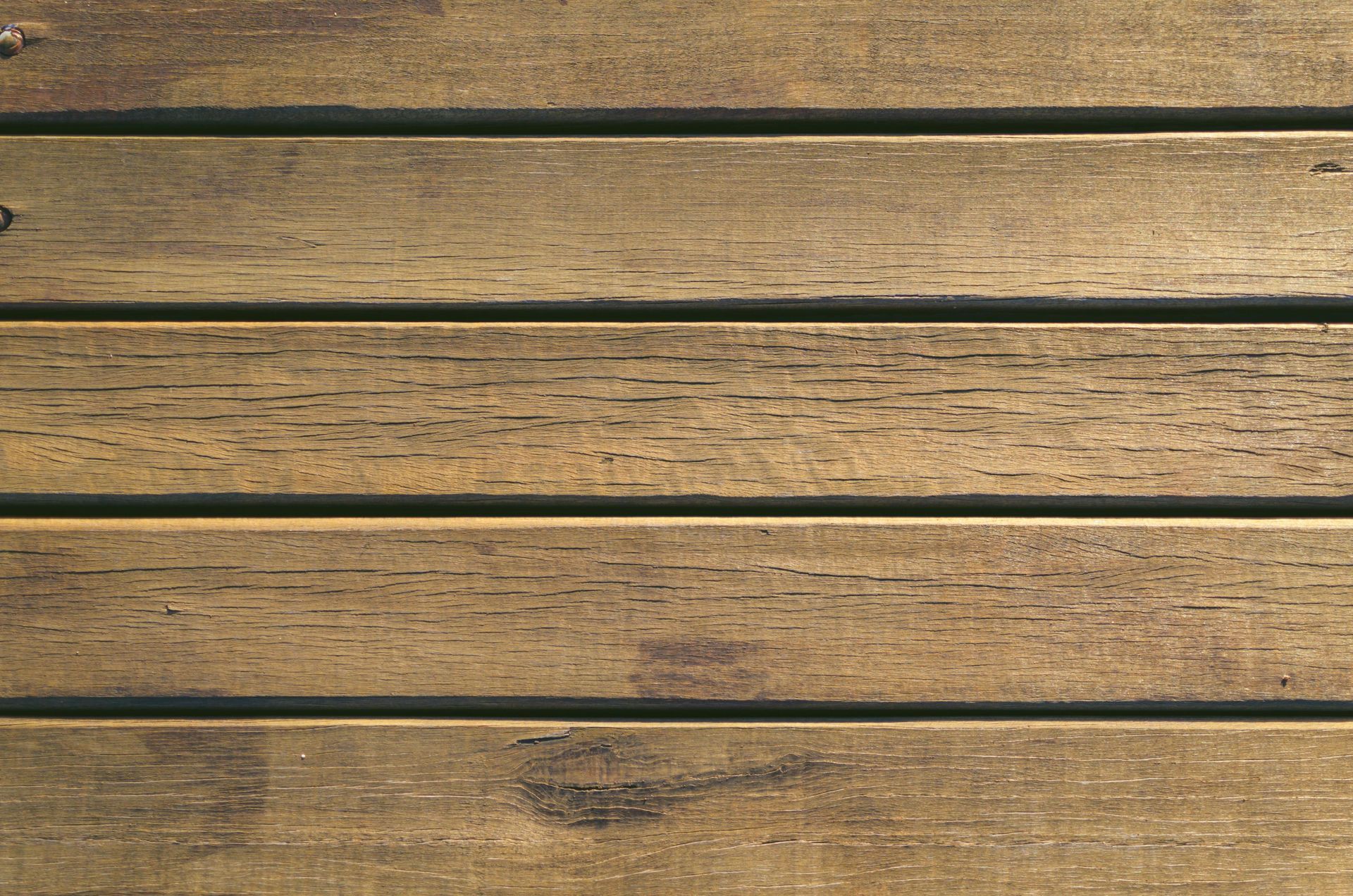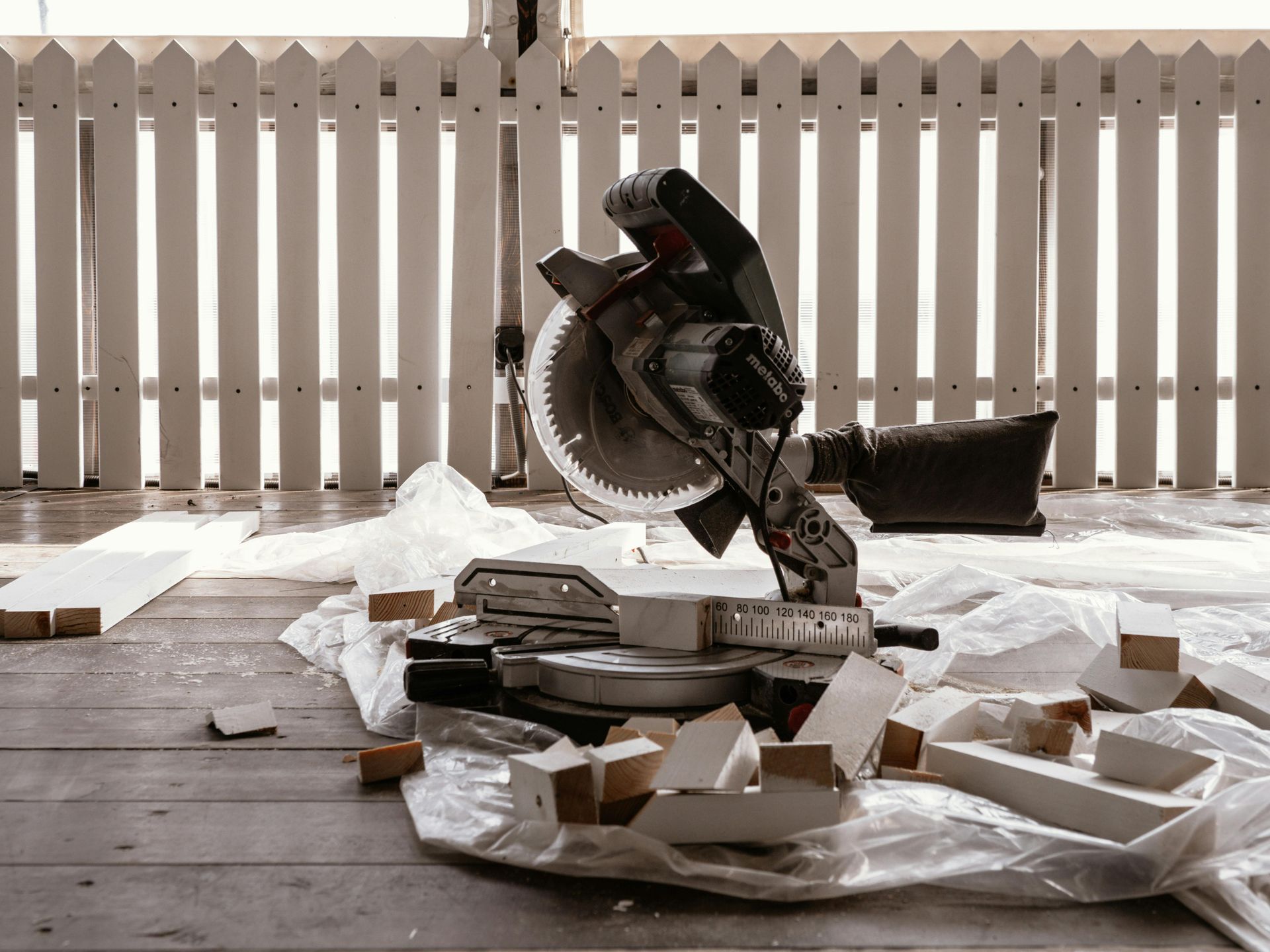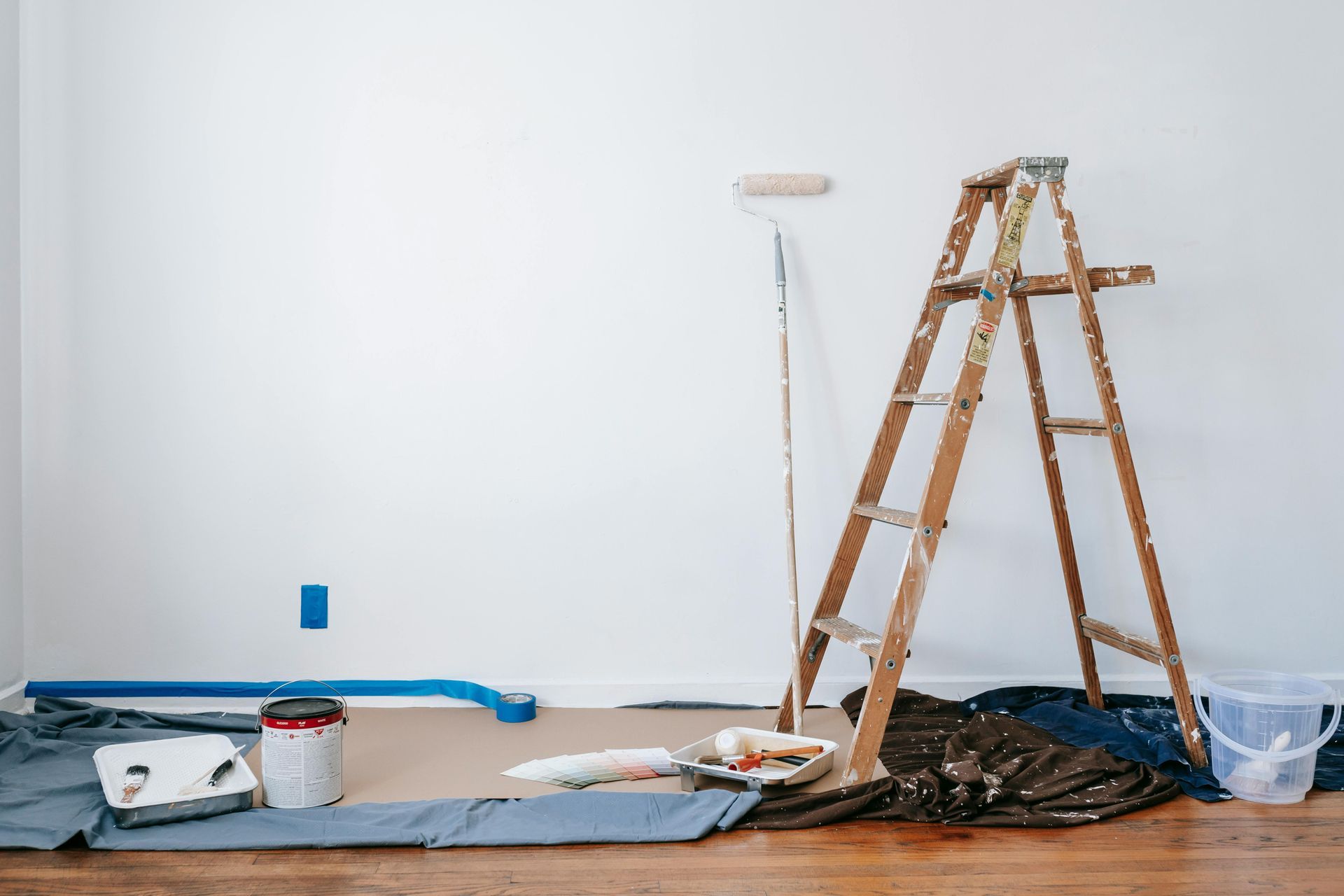Things to Consider When Planning Your Decking in Boulder
March 29, 2021
Your porch is a staple for your home exterior. Whether you have a wrap-around, front, back, or all of the above, your patio allows you to enjoy the outdoors from the comfort of your property. They are ideal spaces for hosting or for including extra amenities like grills, barbecues, hot tub spas, or pools if you go big enough.
Your porch may require some maintenance or renovations. Now is the ideal time to look for the best lumber in Boulder
so you can find the right wood that suits your porch needs and exterior aesthetic. You want to make the right choices in your materials and design strategies, so your home’s curb appeal increases and your porch is functional for you, your family, and your guests to enjoy using it.
When planning your porch for your old or new home, you will need to consider important guidelines so you do everything right. If you fail to consider all factors around your porch building, you could end up in trouble or put your own or other people’s safety at risk due to structural integrity issues.
Avoid the potential harms of improper porch design by implementing these strategies:
Research Local Legislations
Depending on your area, your municipality may have some established regulations which limit the sizing or construction of porches. This could because your residential area includes homes being within tight proximity to one another, so your patio could become an obstacle or a nuisance to your nearby neighbors. If your property was constructed several decades ago, your homeowner’s association might conclude your house is too old and fragile to have a porch added to it.
Contact your local association or consult with experts in Boulder hardware stores who may have the necessary insights on building and installation permits in your area. You can determine what is passable and what is forbidden when it comes to building your porch. Perhaps you’re allowed to make a wrap-around but can not expand its sizing in the future. By calling a helpline, emailing legislators or organizations committed to homeowners, or talking in-person to experts, you can determine how to proceed with your building.
You will likely undergo an inspection or home assessment before you can start building. This is a security measure that will protect you and others from any potential harm resulting from improper porch building. With an inspection completed and the thumbs up from legislators, you can abstain from the necessary rights and documents that confirm your ability to build your beautiful exterior porch.
How Do You Plan to Use Your Porch?
Ask yourself this question as you outline your porch building specifications. How big do you need it to be? Do you plan to host on your porch? In that case, you may want it to include several levels or one large open space where your guests can socialize and enjoy themselves. Or, is your porch just for you and your family to enjoy bonding times? You may choose to install a pool without needing much sitting space so you can enjoy your time with your loved ones doing fun water activities. The options for how you can use your porch are endless, but you need to have them defined so you can determine your required sizing and materials.
You’ll generally want enough space on your porch for furnishings and easy, safe movement around. You may also require railings depending on the height of your installation. Will the entire construction be an open concept? Or will you want a screened section with door fixtures and windows so you can escape the bugs or enjoy some shade? These are all questions you should consider before making your final design choices.
What Materials Will You Need?
When it comes to your building materials, you have more options. You can choose between:
Pressure-treated wood
- Easy to use
- Can be easily stained with your choice of coloring and waterproofed
- Tends to corrode easily over time and potentially warp or crack
- High-maintenance
Composite decking in Boulder
- Pre-treated, texturized, and colored for your convenience
- Long-lasting and will not warp or crack from time or weather conditions
- May not appear as authentic wood
- Easily stained or scratched
PVC
- Trimming material that is resistant to moisture
- Will not warp or rot
- Easily cleaned and maintained
- May be more plastic-looking and less realistic
Cedar/Redwood
- Repels insects
- Fades into a greyish shade
- Higher maintenance for waterproofing
By visiting a retailer that offers Trex decking in Boulder
and other material options, you can gather the necessary resources, including railing, doors, screening, wind fixtures, that you’ll need for constructing your porch.
Optimize Views From Your Porch
When designing your porch, remember to consider where you will find the best outdoor views around your home. Choose between the East side of your house for enjoying your cup of coffee while watching the sunrise or the west side for colorful sunset views. The front of your home may look over a beautiful lake, or your backyard could hold an entire oasis of greenery and plants that make you feel one with nature. You’ll be much more saturated with your porch design while observing the beauty of your surroundings.
Decorate Your Porch
While the wood materials are enough to make your porch visually-appealing, you should add decorative finishing touches that demonstrate your pride in your craftsmanship and make your porch an enjoyable space. Surround your patio with lighting that sets the right mood. You could include sensory lighting or plug lovely twinkle lights for a more whimsical effect. If you’ve built a gazebo, consider adding a central lighting fixture, like an elegant chandelier, for a high-quality look.
Include comfortable furniture for your hosting needs or outdoor eating. Choose chairs and stools with comfortable cushioning, or add lounge chairs for sun-bathing. Why not go big and add that tv to create an entire outdoor living area so you can get the best of both worlds?
When it comes to your porch design, you will ultimately need it to be safe, functional, and well-built. This will be where you bond with your family, friends, and neighbors, so don’t hold back. You'll end creating a high-end outdoor space that could boost your property’s value if you ever sell. Create the porch of your dreams with no regrets.

Nearly 1 in 4 new homes in the U.S. includes a deck, and for good reason: a deck can return up to 70% of its cost in resale value. However, with many older decks nearing the end of their lifespan (approximately half are now 20 years or older), more homeowners are asking the same question: What is the best decking material? The answer isn’t one-size-fits-all. Your choice depends on your budget, climate, and the amount of time you're willing to spend on maintenance. Some people love the natural warmth of wood, while others prefer the low-maintenance durability of composite. In this guide, we’ll explore both, highlight their benefits and drawbacks, and help you decide which material best suits your home and lifestyle. Wood Decking: Classic Beauty with Natural Appeal When homeowners ask what is the best wood decking material , the answer usually comes down to three main types: pressure-treated lumber, cedar, and redwood. Each offers natural charm and unique qualities that synthetic materials can’t fully replicate. Benefits of Wood Decking Authentic look and feel: Wood’s warmth and grain patterns create a timeless appearance. Cost-friendly options: Pressure-treated lumber is among the most affordable choices for building a deck. Premium appeal: Cedar and redwood are naturally resistant to decay and insects while adding rich color and elegance. Customizable: Wood can be painted, stained, or left to weather naturally, giving homeowners flexibility in design. Drawbacks of Wood Decking Requires regular upkeep: Sanding, staining, and sealing are necessary to preserve its appearance and durability. Vulnerable to moisture: Without maintenance, wood can warp, rot, or crack over time. Shorter lifespan: Even high-quality wood generally doesn’t last as long as composite. Ideal usage Wood is best suited for homeowners who want a traditional deck with natural beauty, don’t mind yearly maintenance, or are looking for a lower upfront cost. Composite Decking: Modern Durability with Low Maintenance Composite decking is made from a blend of recycled plastics and wood fibers. These boards withstand the elements while requiring minimal upkeep. Benefits of Composite Decking Low maintenance: No sanding, staining, or sealing required—just occasional cleaning. Durability: Resistant to fading, staining, mold, and insect damage. Variety of styles: Available in a wide range of colors and finishes, many of which closely mimic natural wood. Eco-friendly: Often manufactured with recycled materials, making it a sustainable choice. Drawbacks of Composite Decking Higher upfront cost compared to most wood options. Can retain heat, making it less comfortable to walk on in very hot climates. Some homeowners feel it lacks the authentic look and texture of natural wood. Ideal usage Composite works well for homeowners who prefer a low-maintenance deck, live in regions with extreme weather, or want to maximize long-term durability and value. Comparing Wood and Composite: What is the Best Decking Material? The answer depends on how the two stack up against your priorities. Here’s a breakdown: Cost Wood: Lower upfront cost, especially with pressure-treated lumber. Composite: More expensive initially, but often pays off over time with less maintenance. Durability Wood: Can last 10–20 years with consistent care. Composite: Often lasts 25–30 years or more with minimal upkeep. Maintenance Wood: Requires regular staining and sealing. Composite: Occasional washing is usually enough. Aesthetics Wood: Authentic natural grain and warmth. Composite: Wide variety of colors and finishes, though less “organic” in feel. Sustainability Wood: Renewable and biodegradable if sourced responsibly. Composite: Often made from recycled plastics and reclaimed wood fibers. Climate Suitability Wood: Performs best in dry climates. Composite: Ideal for wet, humid, or very sunny regions. In other words, if you’re looking for the best deck material on a budget and enjoy hands-on projects, wood is your best bet. However, if you prefer convenience and long-term reliability, a composite may be worth the investment. Trends and Sustainability in Decking Beyond performance, many homeowners today also consider style and environmental impact when selecting the best material for decks. Popular trends include: Wider boards for a modern, sleek look. Mixed materials such as combining wood with metal or composite accents. Multi-tone patterns using different composite shades for borders or inlays. Sustainability highlights: Responsibly harvested wood supports renewable forestry. Composite decking helps reduce plastic waste by repurposing recycled materials. Both materials can be environmentally responsible, so your decision can align with eco-conscious values no matter which way you go. What Is The Best Composite Decking Material? Not sure which way to go? Here are some practical tips to help you decide. Think about your lifestyle : Do you enjoy DIY upkeep projects, or would you rather spend your weekends relaxing on the deck? Consider your climate : Wood may work well in drier areas, while composite is often better in humid or sun-heavy regions. Look at long-term value : Wood saves money upfront; composite saves time and cost in maintenance over the years. Match your style : Wood gives you unmatched authenticity, while composite offers more consistent colors and finishes. By weighing these factors, you can identify the material that fits your home and needs best. Making the Right Choice for Your Deck So, what is the best material for decking? There’s no universal winner, just the best choice for your lifestyle. Wood offers classic beauty and affordability but requires upkeep. Composite provides modern durability and convenience, though it comes at a higher initial cost. If you want a traditional, natural look and don’t mind regular maintenance, wood is a great option. If you prefer a low-maintenance, long-lasting solution, composite might be the smarter investment. Either way, choosing the right deck material ensures you’ll enjoy years of outdoor living on a deck that adds beauty and value to your home. If you’re ready to explore your options, Budget Home Supply in Longmont, CO, offers both wood and composite decking, so you can compare side by side and choose the material that’s right for your home.
Discover essential tips to prevent frozen pipes this winter! Learn how to winterize your plumbing, avoid costly repairs, and keep your home safe during cold months.
Discover essential tips for weatherproofing your home for
every season. Keep your space comfortable and energy-
efficient with our ultimate guide!
Why Wood Decking is Better Than Composite Decking for Your Home Thinking about sprucing up your backyard with a stunning deck? When it comes to choosing the right material for your deck , the decision often boils down to wood vs composite decking. Each option has its advantages, but many homeowners still prefer the classic appeal of wood decking for homes. If you're considering building a deck, we can explain why wood decking might be the perfect fit for your home. It offers a budget-friendly and beautiful outdoor oasis. Timeless Beauty of Wood Decking One of the most compelling reasons to choose wood decking is its natural beauty. Wood has a rich, warm appearance blends naturally with most outdoor environments. While composite decking has come a long way, it often can't replicate the organic feel and timeless charm of wood. Each wood plank is unique, offering varied grains, knots, and colors that make your deck one-of-a-kind. Additionally, wood decking can be easily stained or painted in various shades to match your home's aesthetic. If you ever want to change the look, refinishing wood is relatively simple, allowing you to switch up the vibe of your outdoor space without replacing the entire deck. Affordability When you compare wood vs composite decking, wood generally wins on price. Although composite decking materials have become more affordable, they can still be significantly more expensive than wood. Wood decking is a smart option if you're working with a tight budget but still want a high-quality deck. Budget Home Supply offers various wood types at competitive prices, making it easier to choose a cost-effective material without compromising quality. If you're handy, wood decking allows for a more budget-friendly DIY project. Eco-Friendly Option For environmentally conscious homeowners, wood decking is often the more sustainable option. Most wood used for decking is harvested from responsibly managed forests, making it a renewable resource. With proper care and maintenance, a wood deck can last for decades, reducing the need for frequent replacements that could add to waste. Composite decking, on the other hand, is made from a combination of plastic and wood fibers. While some composite products use recycled materials, many still rely on plastics, which can have a higher carbon footprint. If sustainability is a priority for you, choosing wood could help reduce your environmental impact. Comfort and Temperature If you plan on spending a lot of time on your deck, comfort is key. In the battle of wood vs composite decking, wood is often cooler underfoot, making it a more comfortable choice during hot summer months. Composite decking materials, especially darker colors, tend to absorb heat, making them uncomfortable to walk barefoot. This is vital to consider if you live in a warmer climate or if your deck gets direct sunlight. Wood's natural texture also makes it feel more inviting, giving it an organic softness that enhances the outdoor experience. Plus, wood won’t retain heat as much as synthetic materials, ensuring a more enjoyable space for entertaining and relaxing. Repairability Over time, wear and tear are inevitable, but wood decking is easier to repair than composite. If a section of your wood deck becomes damaged, you can typically replace individual boards or sand them down to restore the surface. With composite decking, repairs can be more complicated. Matching colors and textures in composite materials can be difficult, and some types of composite decking don’t allow for spot repairs, meaning you might need to replace larger deck sections. Wood's natural composition allows for refinishing, giving your deck a second life and saving you money in the long run. Regular sanding and staining can breathe new life into your deck, making it look almost brand new again. Classic Appeal There's something undeniably classic about wood decking for homes. It's a choice that has stood the test of time. From rustic to modern homes, wood can complement any architectural style. It's versatile, allowing various design options like custom railings, built-in seating, or intricate woodwork. The flexibility of wood as a material gives you endless possibilities when designing your outdoor space. While durable and low-maintenance, composite decking may not offer the same level of flexibility when it comes to customization. Wood is often the better option if you want a deck that feels like a true extension of your home. Customization Options When it comes to wood decking, you have several options, whether it’s pressure-treated wood, cedar, or exotic hardwoods like ipe or mahogany. Each type of wood offers unique qualities in terms of durability, appearance, and price. For instance, cedar is very resistant to rot and insects, which makes it a long-lasting option for outdoor decks. Additionally, Budget Home Supply offers a range of wood materials , allowing you to pick the right fit for your climate, budget, and aesthetic preferences. Maintenance It’s no secret that wood decks require more maintenance than composite decking, but it’s often overstated how much work wood needs. Basic care, such as annual cleaning, occasional sealing, and periodic staining, can keep your wood deck looking fantastic for years. Maintaining wood is straightforward with the right products and a little elbow grease. If you enjoy outdoor projects or take pride in keeping your home in top shape, maintaining a wood deck can be a satisfying experience. Plus, wood's ability to be sanded and refinished gives it an advantage over composite, which can show irreversible wear after years of use. Value and ROI When considering the long-term value of wood vs composite decking, wood often provides a better return on investment. Many homebuyers are drawn to the natural beauty of wood decks, which can enhance curb appeal and increase the overall value of your home. While composite decks may last longer and require less maintenance, they may not offer the same aesthetic appeal to prospective buyers. Wood decking provides a sense of craftsmanship and tradition, which can be especially appealing in homes with natural landscapes or older architectural styles. Refreshing your wood deck with stains or paints allows you to keep it looking fresh and appealing, further adding to its value. Bottom Line: Wood Decking Wins for Many Homeowners In the debate of wood vs composite decking, the natural beauty, affordability, and repairability of wood decking make it a standout choice for many homeowners. Whether you want to create a cozy backyard retreat or an elegant outdoor entertaining space, wood offers flexibility, timeless style, and a solid return on investment. At Budget Home Supply, we offer various wood decking materials to suit every need and budget. Consider wood if you want to build a deck that combines beauty with durability. Visit us at Budget Home Supply to explore your options and make your outdoor space the best it can be. So, why wait? Start planning your dream wood deck today!
Discover the best hardwood for kitchen cabinets! Explore options like maple, oak, cherry, and more, and find the perfect fit for your home at Budget Home Supply.
Explore the best pergola materials for your outdoor space in Longmont, Colorado. Learn about wood, vinyl, aluminum, and more to find the perfect fit for your needs.
Discover top home improvement projects to enhance your curb appeal. From fresh paint to landscaping tips, Budget Home Supply has everything you need.



